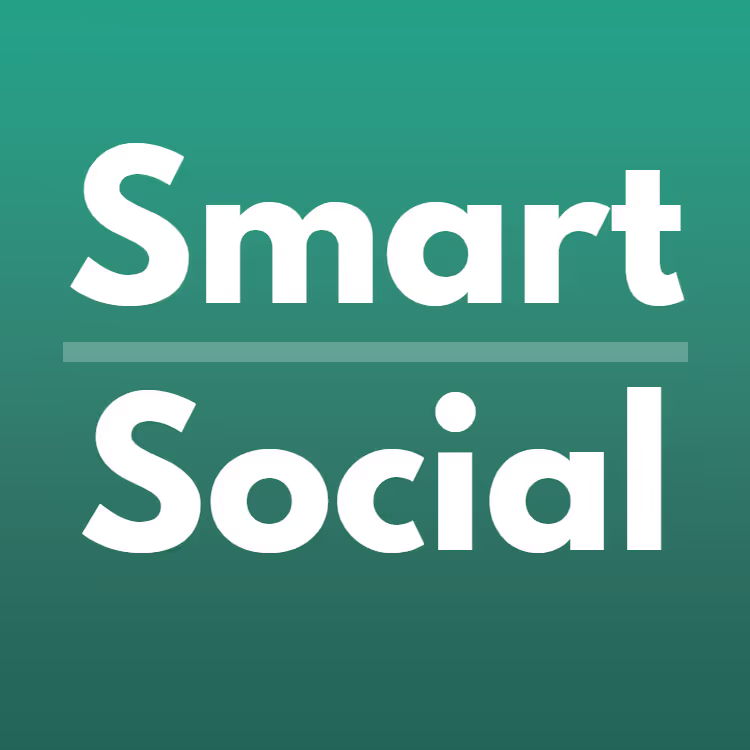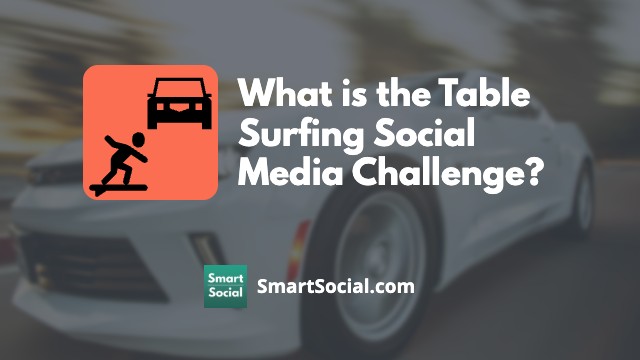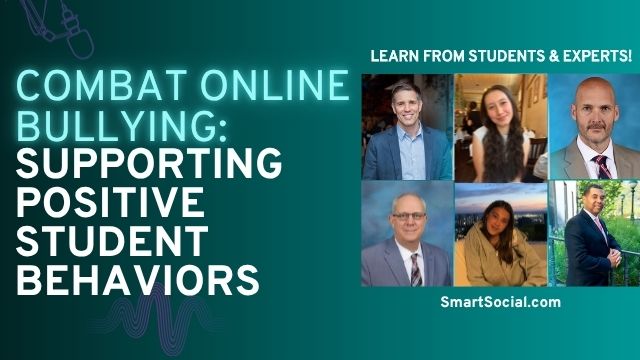How to Create an Online Portfolio for College Admissions
Green Zone App
(Click here to learn more)
Dangerous Social media challenge
(Click here to learn more)
Red Zone App
(Click here to learn more)
Gray Zone App
(Click here to learn more)

An online portfolio is a great addition to any student’s resume as they prepare for the college admissions process or their first employment opportunity. It creates an opportunity for students to showcase their strengths, passions, and values.
Teaching students to focus on life with intention
Not all students aspire to life in the Ivy League- and that’s okay! Parents should align themselves with their kid’s aspirations rather than micromanaging them towards goals they’re not interested in, according to college admissions experts Jenn Curtis and Cindy Muchnick. Curtis and Muchnick are co-authors of The Parent Compass: Navigating Your Teen's Wellness and Academic Journey in Today's Competitive World.
Listen to Curtis and Muchnick discuss their goal setting methods for teens on the SmartSocial.com Podcast:
Curtis and Muchnick felt like they were "punched in the gut" when they first heard about the 2019 college admissions cheating scandal.
“We want to encourage parents to accept and love the child they have, not the child they want to inauthentically create,” explained Curtis.
They believe that if you teach students to live life with their own intentions, you can help them better achieve success.
“I think it’s the pushing kids that comes from parents that really creates this dissonance and this noise that is so hard for students to get passed because they’re so fragile and worried about pleasing their parents,” Muchnick explained.
Instead, they urge parents to focus on building the “whole child” by teaching resilience, grit, and how to bounce back from mistakes.
They also believe in the importance of praising students along their journey, rather than only for the end result. Helping students document their passions and accomplishments with an online portfolio is a great way to celebrate their achievements - big or small.
Expert tips for creating an online portfolio
We asked ten professionals to share their best tips for students who want to create a successful online portfolio. Learn which platforms students can utilize for building their online portfolio and techniques for sharing their budding expertise online.
1. Be honest and show off your creativity

Karen Gross, Author and Educator
Most students think they have to be beyond remarkable to get noticed by colleges.
They perceive they need to be good at everything. From my perspective, honesty and self-reflection are key attributes I looked for in new students.
Creativity and problem solving capacity too. Real life situations and how they got resolved -- even hard stories -- are valuable to share, whether in writing or in a video or a poem or a series of photos or images.
2. Start building your digital footprint early

Josh Ochs, Author and Founder of SmartSocial.com
Encourage students to start building their digital footprint in middle school, which they can later use to Shine Online. This is a great way to get students excited about their future while archiving their accomplishments. Each year your student can update their online portfolio/website to showcase school projects, extracurricular activities, and other accomplishments.
The portfolio can be made into a college-visible website once they are ready to start applying for college, jobs, or internships. If done correctly, a personal website/online portfolio will also boost their Google search results by showing up when someone searches for their name.
SmartSocial.com offers the Student Branding Academy to teach families how to build a custom, online portfolio/website.
3. Prove your potential by showing off your work

Precious Hardy, Instructor
One of the great things about being able to use visuals is that it allows students to truly showcase their skills. In the words of a mentor, “it is not bragging if you have evidence that you've done it.”
Using free or inexpensive online tools can help students craft their stories of leadership, community outreach, research experience, or anything other skills they want to showcase applying.
4. Avoid boring templates, use a field-related theme

Brandon Foster, Teacher & Blogger
Students should not fall into the trap of using templates to build out their resumes. These templates limit their control of being creative and also not stand out from other resumes.
Students should blend the six ingredients - education, major, experience and service, skills, and relevant projects to come up with a strong resume. Colleges are no more interested in merely knowing the candidates' academic side; they want to know the candidates' personalities and interests. Even if you have family responsibilities, you might list them in a separate Achievement section by proudly representing yourself as a responsible family member.
Additionally, students should choose the theme according to their field. For example, if applying for a field related to designing, then dull white or black resumes will not grab attention in a second. Contrarily, the one with bold colors will give it a field-relevant touch.
5. Showcase that you are tech-savvy

Jacques Buffet, Career Expert at Zety
Creating a resume website shows that you are tech-savvy and follow new trends. Also, such a website gives you more space to display your portfolio. So whether you have samples of your writing, artwork, videos or photos, you can display them easily in a designed portfolio section on your website. Simple as that.
There's also plenty of space to include references and testimonials from your professors or internship mentors—something a standard resume cannot hold. And finally, a resume website is easy to manage and add to it with time.
6. Keep it brief and update it regularly

Anshul Kapoor, COO at MBA Rendezvous
Students can follow the 3 Bs while creating their portfolio to include their personal, academic, and extra-curricular details:
- Build – Focus on creating a profile that highlights your pluses
- Brief – Keep it concise and engaging
- Broadcast – Remain active and keep updating your profile periodically
7. Make it visually appealing

Kimberley Ring, Adjunct Professor & President at Ring Communications
Any student looking to stand out amongst other applicants for admissions, jobs, or internships should focus on drawing a viewer eyes in.
Find ways to visually call out the information that “wows”. You can do that with color contrast, bold type, and strategic layout and organization. Tools such as Wordpress or Wix, Canva, and even LinkedIn are built to help do that.
8. Upload your resume to Behance

Chelsey Moter, SEOWorks
One of the easiest and fastest ways to create an online portfolio is through Behance. You just need to create an account and you're able to upload work almost instantly.
It's also a great place to upload your resume, profile picture and add a short bio so employers can quickly get an idea of who their potential candidate will be.
Behance allows you to have everything all in one spot which is the most convenient way to show professors and employers your professional information.
9. Ensure that your work is easily accessible

Alex Brown, TechRocket.com
There are a lot of different ways to get your work out there and there’s going to be even more, depending on your medium. One of the easiest ways to build an online portfolio is to create your own website with something like Squarespace. It’s fast, clean and gives you a professional look for relatively low price.
If you’re into game design or app design, it’s always impressive when you can get your work on the front page of an industry professionals site. For example, if you design with Unity, they have a step by step process for getting your game featured on their main page with tons of educational content to help you get there.
No matter how you show your work, whether it’s through your website, Vimeo, or Pinterest what’s important is that it’s easily accessible so you’re not trying to explain hundreds of hours of work with only a few sentences. Seeing is believing.
10. Create a LinkedIn account

Erin Goodnow, Going Ivy
A resume with a college application shows the admissions department that you are prepared for success, not only in school, but beyond. Include your class rank and GPA and highlight your awards. (Yes, Perfect Attendance or Miss Congeniality counts.) Write short descriptions for all your school-sponsored, community and even summer activities.
If you spent every summer at yoga camp or visiting grandparents in Greece or the Arkansas Ozarks, put it in! It all helps show the college who you are. Create a LinkedIn account and upload your resume there for a professional look and easy link.
11. Empower students to build a portfolio
Melissa Davis, GoEnnounce
I think that there is a trend with schools to avoid social media because they don't want to touch it and they don't want to allow students to use it. I believe that you can't be scared of social media and you have to teach students that social media is a tool. It is going to be around them for the rest of their life and they are using social media to access information on their devices already. Teens need to learn that social media can be a tool to promote themselves and share their deep accomplishments and goals. They can track everything from science projects to volunteer projects.
If you tell a child that they can't have something, then they want that thing. Telling kids not to use social media and taking devices and having a "lockdown" just doesn't work. It also doesn't teach kids how to do things properly. We need to acknowledge where they are and teach them how to do it right. Another big tip here is the younger, the better. By the time they get to middle school, they have already done too much damage. They have already opened half a dozen social media accounts.
Digital citizenship education is KEY for college readiness. Look at the recent Harvard issue where they rescinded offers to at least 10 students because of a private Facebook group. This whole idea of digital citizenship is a term that schools are now starting to bring in and "What is digital citizenship?" What does it mean? Going as young as elementary and instilling this mindset that they are going to be on tech and digital citizenship is just being a good citizen. There is no difference between analog and digital right now.
Structured reflections help students analyze their learning experiences to reveal and understand outcomes that they might otherwise have missed. We encourage teachers to work with students on their digital communication using things like proper grammar, complete sentences, etc. With a social media portfolio, we require our clients to write something with everything they post. So if I’m sharing my science project, it’s not just a photo of my science project. It’s how can I communicate in words what I have learned? This self-reflection helps students analyze their learning experience so they can understand outcomes that they might have otherwise missed.
Social media gives students a voice. When a student’s online presence is positive about what's happening at school, the community takes note! GoEnnounce gives students a voice and also helps schools with retention because it lets parents know what students are up to and what they are doing at school. With a tool like GoEnnounce, the kids think it's fun to be able to use a tool similar to Facebook at school and post and collaborate with other students. We allow parents and at the other secondary level, they can invite their aunts or uncles or other mentors to view their GoEnnounce feeds as well and get notifications. So whether it’s GoEnnounce or any type of social media, encourage your kids to share what they are doing and work with them on their reflection skills and their voice.
Conclusion
The college application process is an exciting, yet sometimes stressful, time. Not all schools require an online portfolio, but it will certainly never hurt a student’s chances of admissions . Taking time to create an online portfolio will show admissions officers that students are willing to work hard and will help establish a more human connection with an admission’s committee.
Enroll in SmartSocial.com's Very Informed Parent (VIP) program to learn how to keep your students safer online.
The SmartSocial.com Student Branding Academy will guide students to build a custom, online portfolio/website to impress colleges and future employers. This process gets students excited about their future and teaches them to shine online.
Protect your family and enter for a chance to win cool prizes
Become a member or log in to learn more on this topic
Protect your family and enter for a chance to win cool prizes

., start learning from this page to earn points!*
Hello, I'm Josh, the founder of SmartSocial.com.
Don't leave this page until you fill out our feedback form that will appear after you learn from the resources...
Become a Very Informed Parent (VIP) to get our social media suggestions in your email every Tuesday & Thursday.



Hello, I'm Josh, the founder of SmartSocial.com. Protect your family by taking my 1 minute quiz
This quiz will help you understand how safe your family is


Schools & Districts: Partner with us to protect your community online
Our remote presentations (and website) teach over a million parents and students each year how to be safe so they can shine online. We teach students how their accounts can be used to create a portfolio of positive accomplishments that impress colleges and employers.


Join Our Smart Social Podcast
each week on iTunes
With over 500 episodes, Josh Ochs interviews psychologists, therapists, counselors, teachers, and parents while showing you how to navigate social media to someday shine online.
Listen on:



.jpg)
.jpg)
.jpg)


